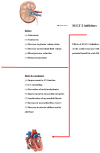The Therapeutic Role of SGLT-2 Inhibitors in Acute Heart Failure: From Pathophysiologic Mechanisms to Clinical Evidence with Pooled Analysis of Relevant Studies across Safety and Efficacy Endpoints of Interest
- PMID: 36556427
- PMCID: PMC9782870
- DOI: 10.3390/life12122062
The Therapeutic Role of SGLT-2 Inhibitors in Acute Heart Failure: From Pathophysiologic Mechanisms to Clinical Evidence with Pooled Analysis of Relevant Studies across Safety and Efficacy Endpoints of Interest
Abstract
(1) Background: Sodium-glucose co-transporter-2 (SGLT-2) inhibitors constitute a novel drug class with remarkable cardiovascular benefits for patients with chronic heart failure (HF). Recently, this class has been utilized in acute HF as an additional treatment option to classic diuretics, which remain the cornerstone of treatment. (2) Methods: We attempted to identify those pathophysiologic mechanisms targeted by SGLT-2 inhibitors, which could be of benefit to patients with acute HF. We then conducted a comprehensive review of the literature within the PubMed database in order to identify relevant studies, both randomized controlled trials (RCTs) and observational studies, assessing the safety and efficacy of SGLT-2 inhibitors in acute HF. (3) Results: SGLT-2 inhibitors induce significant osmotic diuresis and natriuresis, decrease interstitial fluid volume and blood pressure, improve left ventricular (LV) function, ameliorate LV remodeling and prevent atrial arrhythmia occurrence, mechanisms that seem to be beneficial in acute HF. However, currently available studies, including six RCTs and two real-world studies, provide conflicting results concerning the true efficacy of SGLT-2 inhibitors, including "hard" surrogate endpoints. (4) Conclusions: Current evidence appears insufficient to substantiate the use of SGLT-2 inhibitors in acute HF. Further trials are required to shed more light on this issue.
Keywords: SGLT-2 inhibitors; acute heart failure; cardiovascular disease; mechanism; outcome; type 2 diabetes mellitus.
Conflict of interest statement
The authors declare no conflict of interest.
Figures









References
Publication types
LinkOut - more resources
Full Text Sources
Research Materials
Miscellaneous

